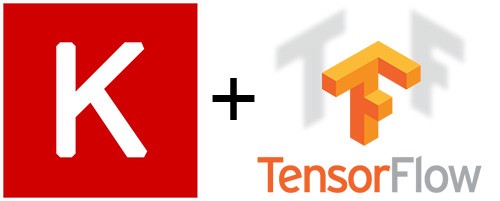How to use GridSerachCV in Deep Leaning using Keras

Grid search is a technique used to find the best set of hyperparameters for a machine learning model. It involves specifying a range of possible values for each hyperparameter and training the model for each combination of hyperparameter values. The goal is to find the combination of hyperparameters that produces the best performance on a validation dataset.
In Keras, you can use the GridSearchCV function from the sklearn library to perform grid search for a deep learning model. This function takes several arguments, such as the model, the range of possible values for each hyperparameter, the validation dataset, and the evaluation metric.
The first step to use GridSearchCV in Keras is to create a function that creates and compiles the model. This function should take the hyperparameters as arguments, so they can be passed to the GridSearchCV function. Next, you need to specify the range of possible values for each hyperparameter.
Once you have defined the model and the range of possible values for each hyperparameter, you can create an instance of the GridSearchCV class and pass it the model, the range of possible values, the validation dataset and the evaluation metric. Then call the fit function on the created instance of the GridSearchCV class with the training data as an argument.
The GridSearchCV function will then train the model for each combination of hyperparameter values and evaluate its performance on the validation dataset. Once the grid search is completed, you can access the best combination of hyperparameters that produced the best performance on the validation dataset.
It’s important to note that GridSearchCV does not return the best model, instead it returns the best combination of hyperparameters. The best model can be obtained by instantiating a new model with the best combination of hyperparameters and training it on the entire training dataset.
In summary, to use GridSearchCV in deep learning using Keras, you need to create a function that creates and compiles the model and takes the hyperparameters as arguments, specify the range of possible values for each hyperparameter, create an instance of the GridSearchCV class and pass it the model, the range of possible values for each hyperparameter, the validation dataset and the evaluation metric. Then call the fit function on the created instance of the GridSearchCV class with the training data as an argument. The GridSearchCV function will then train the model for each combination of hyperparameter values and evaluate its performance on the validation dataset. Once the grid search is completed, you can access the best combination of hyperparameters that produced the best performance on the validation dataset. It’s important to note that GridSearchCV does not return the best model, instead it returns the best combination of hyperparameters. The best model can be obtained by instantiating a new model with the best combination of hyperparameters and training it on the entire training dataset.
In this Applied Machine Learning & Data Science Recipe (Jupyter Notebook), the reader will find the practical use of applied machine learning and data science in Python programming: How to use GridSerachCV in Deep Leaning using Keras.
Latest end-to-end Learn by Coding Recipes in Project-Based Learning:
All Notebooks in One Bundle: Data Science Recipes and Examples in Python & R.
End-to-End Python Machine Learning Recipes & Examples.
End-to-End R Machine Learning Recipes & Examples.
Applied Statistics with R for Beginners and Business Professionals
Data Science and Machine Learning Projects in Python: Tabular Data Analytics
Data Science and Machine Learning Projects in R: Tabular Data Analytics
Python Machine Learning & Data Science Recipes: Learn by Coding
R Machine Learning & Data Science Recipes: Learn by Coding
Comparing Different Machine Learning Algorithms in Python for Classification (FREE)
Introduction to Applied Machine Learning & Data Science for Beginners, Business Analysts, Students, Researchers and Freelancers with Python & R Codes @ Western Australian Center for Applied Machine Learning & Data Science (WACAMLDS) !!!
Subscribe SETScholars on YouTube.
Support SETScholars for Free End-to-End Applied Machine Learning and Data Science Projects & Recipes by becoming a member of WA Center For Applied Machine Learning and Data Science (WACAMLDS). Membership fee only $1.75 per month (on annual plan) and you will get access to 425+ end-to-end Python & R Projects.
Western Australian Center for Applied Machine Learning & Data Science – Membership
Learn by Doing With DataCamp
How to setup a multiclass classification Deep Leaning Model in Keras
How to setup a binary classification Deep Leaning Model in Keras